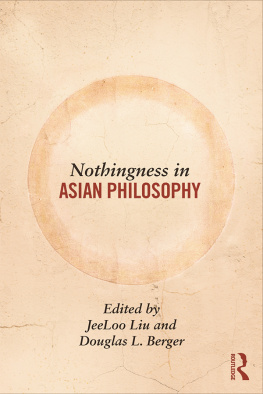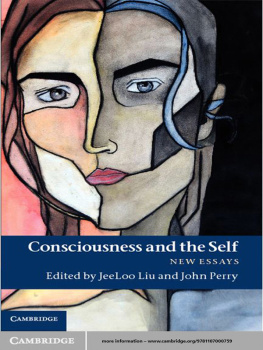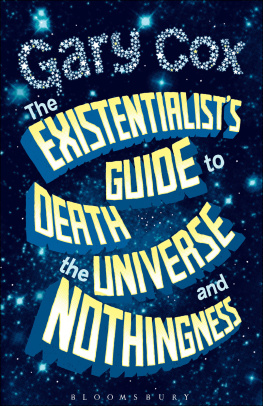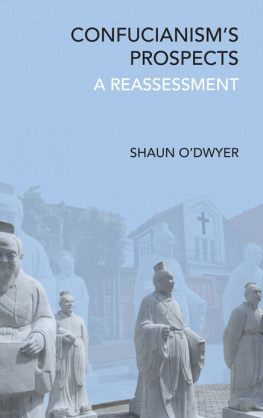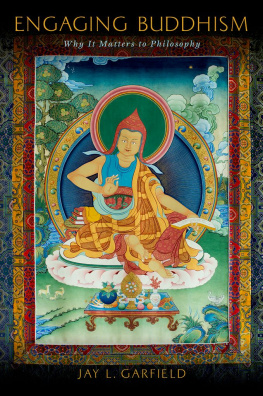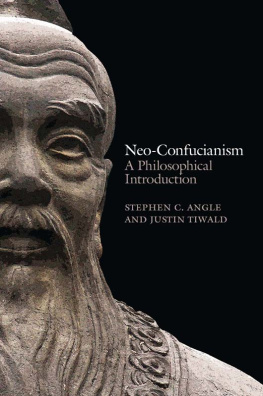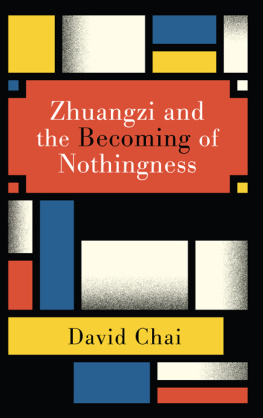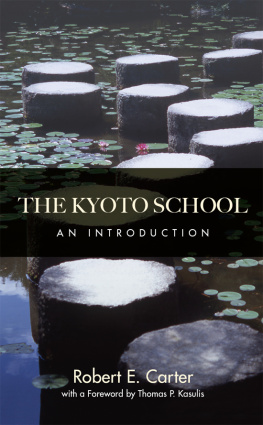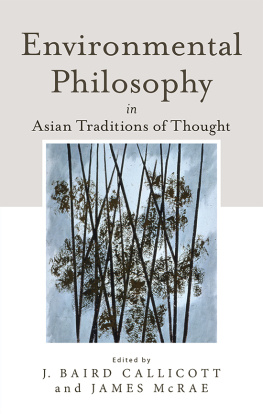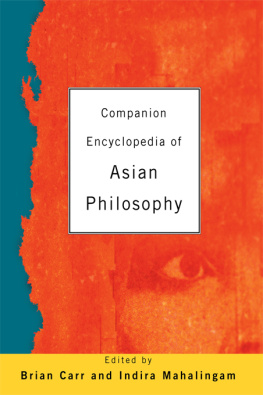In the second half of the twentieth century, a tendency among English language scholars of comparative theology and philosophy emerged in portraying Buddhist philosophy, and Japanese Zen Buddhist philosophy in particular, as a philosophy of nothingness. In Zen and the Western World , Masao Abe ( 19152006) makes the claim that the Kyoto school developed a philosophy based on a (in Abes words, the) Buddhist perspective and contributed to world philosophy the concept of absolute nothingness ( zettai mu , ) (1985, 128, 158159). Leaving aside the fact that the prevalent East-West rhetoric has become completely untenable and that Buddhist philosophy and even the philosophy of the Kyoto school are not monolithic, Abe still makes a valuable observation. Two of the three main thinkers of the Kyoto school, Kitar Nishida (18701945) and Keiji Nishitani (19001990), did indeed develop philosophical systems based on the conceptions of absolute non-being ( zettai mu , )demonstrate how Dgens overall non-dualistic worldview affects his philosophies of language and practice.
In The Treasury of the True Dharma Eye ( Shbgenz ), Dgen develops what some of the Kyoto school philosophers will later call a philosophy of nothingness based on his examination of the records of the Chinese Chan masters and other Buddhist texts. However, Dgen, like Nishitani later, seems to privilege the term emptiness over non-being. The term emptiness constitutes the central concept of Madhyamaka Buddhist philosophy while Chan thinkers tend to employ the terms nonbeing, being-and-non being ( youwu , ), or various derivations thereof. The reason for this is that, while many Mahyna Buddhist philosophers that emphasize emptiness, also known as nyatvda , critique the dualistic structures inherent in conceptual language from a third perspective, many Chan Buddhist texts directly aim at the deconstruction of language itself. This deconstruction can be linguistic or non-linguistic and performative in nature. Dgen inherits from the Chan tradition a deep distrust of conceptual structures and from nyatvda , a method to destabilize language. This paper will read Dgens conceptions of nothingness and emptiness in the context of his predecessors in order to explore in what way his philosophy can shed light on the nature of language and its relationship to non-verbal communication.
The Conception of Emptiness in the Prajpramit Stras
At this point in the book, the reader will be quite familiar with the philosophies of the Madhyamaka school, especially with that of Ngrjuna. The philosophy of emptiness emerged around two thousand years ago in the Prajpramit ( Perfected Wisdom ) literature. According to Paul Williams (1989), wisdom ( praj , ) is said to be a state of consciousness which understands emptiness ( nyat ), the absence of self or essence, even in dharmas (43). This wisdom, however, is depicted in the large and philosophically diverse body of the Prajpramit literature as either conceptual or non-conceptual (44). The Heart Stra ( Mah-prajpramit-hrdaya-stra , ) (T 8.253), which is falsely identified as the nutshell version of what is mistakenly held to be the shared teaching of the vast body of the Prajpramit literature by texts in the Japanese Buddhist tradition, gives us, nevertheless, a quick glimpse at the key concepts of nyatvda .
The Heart Stra , portrayed as a dialogue between the Bodhisattva Avalokitevara and riputra, roughly divides into two sections: a litany of negations of everything important to the teaching of early Buddhism and a section that introduces the mantra gate gate pragate prasagate bodhisvh as the means to unsurpassed awakening ( anuttar-samyak-sabodhim , , ). Huayan thinkers will later classify unsur-passed awakening as the highest of the five kinds of enlightenments ( wuputi , ) (T 35.1733.412). A closer look, however, reveals that this extremely short text, which has become famous for its formula form is emptiness, emptiness is form ( sejishikong kongjishise , , ) (T 8.253.849), introduces three basic usages of emptiness. In short, emptiness 1) negates all essences; 2) rejects the major early Buddhist teachings such as the four noble truths ( ryasatya , ), the five aggregates ( pacaskandha , ), the eighteen sense worlds ( yatanadhtu , ), as well as the notion of a transcendent world of bliss, nirva ( niepan , ), conceived of in contrast to an immanent world of suffering, sasra ( shengsi , ); and 3) implies that detachment functions as a soteriological means. The phrase form is emptiness, emptiness is form, form is not different from emptiness, emptiness not different from form (T 8.253.849) expresses these three dimensions of emptiness: because form ( rpa , ) and emptiness ( nyat , ) do not have an essence, they are not essentially different from each other. Therefore, any ideology privileging one over the other is meaningless, and attachment to either one is a trap that obstructs wisdom. This threefold dictum of no essence, no ideology, no attachment, while still in a rather rudimentary form in the Heart Stra , provides the basis for the theory of emptiness in Mahyna Buddhist thought.
Two of the nyatvda texts that are important to the current discussion are Ngrjunas (second/third century CE ) Mlamadhyamakrik , and the Diamond Stra ( Vajracchedik-prajpramit-stra ) (T 8.235). In the former, Ngrjuna introduces his tetralemma as the method, literally a medicine, to destabilize the conceptual language of early Buddhist discourses, while the latter constitutes the bridge between nyatvda philosophy and Zen thought. The twenty-fifth chapter of the Mlamadhyamakrik argues that there is no distinction between sasra and nirva . There is no distinction between nirva and sasra . This is so because nirva is neither an existent ( bhva ), nor an absence ( abhva ), nor both an existent and an absence, nor neither an existent nor an absence (Siderits 2013, 293 302). Ngrjuna suggests here that, since sasra and nirva are devoid of self-existence ( svabhva ), the difference between them cannot be essential either. The method he employs systematically reveals the inability of conceptual language to express reality in a sufficient and appropriate way.
The Diamond Stra picks up the same theme of the insufficiency of conceptual language even though its context is a soteriological project rather than philosophical discourse. The text is constructed as kyamunis answer to Subhtis question inquiring how to walk on the bodhisattva path. In his response, kyamuni elaborates on the notion of wisdom ( praj ). Even though the Diamond Stra s full name identifies it as a member of the wisdom literature, the text itself uses the term wisdom rather sparsely and, even then, mostly in the two compounds eye of wisdom ( prajcakus , ) and perfected wisdom ( prajpramit , ). The term emptiness ( nyat , ) does not occur at all. Rein Raud (2003) and I (Kopf 2005) believe that the intent of these kinds of phrases is to destabilize conceptual language and to suggest that the method for bodhisattvas to control their thoughts is non-conceptual.
As I have discussed elsewhere (Kopf 2005), it is possible to identify five kinds of conceptual constructions using the phrase jifei (is not) in Kumrajvas translation of the Diamond Stra . The prototypes of these five formulations are 1) Buddha said the perfected wisdom is not the perfected wisdom (T 8.235.750); 2) the world-honored one said the views of self, person, sentient being, and life are not these views; therefore, we call them the views of self, persons, sentient beings, and life (T 8.235.752); 3) what we call the Buddha dharma is not the Buddha dharma (T 8.235.749); 4) what we call all dharma s is not all dharma s, therefore we call them all dharma s (T 8.235.751); and 5) the Tathgatha said totality is not totality, therefore we call it totality; Subhti, totality is incomprehensible (T 8.235.752). If we were to translate these phrases into formulas the way Suzuki did, they would read as follows: 1) A is not A; 2) A is not A, therefore we call it A; 3) what we call A is not A; 4) what we call A is not A, therefore, we call it A; 5) A is not A, therefore we call it A, because A is incomprehensible. It is really important to note that, for the most part, these phrases do not establish a logical contradiction, but rather contrast concepts with reality. In the two instances where the formula could be interpreted to indicate a contradiction (prototypes one and five), the terms in question constitute concepts signifying transcendence, perfected wisdom and totality, and not particular objects. Both are, by definition, beyond opposition and thus beyond contradiction. The point Kumrajvas translation of the Diamond Stra seems to make is that concepts and positions do not have a one-to-one correspondence with the reality they suggest and are thus insufficient. The wisdom of the bodhisattva s is nonconceptual, and its attainment requires a systematic deconstruction, as we would say today, of conceptual language. It is for these reasons that the Diamond Stra , and more specifically Kumrajvas translation thereof, enjoyed quite some popularity among Chan thinkers and practitioners.

